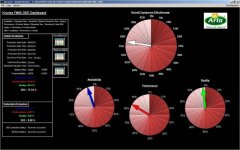Since this is the fourth time I have tried adding this post I will be less wordy.
Hello All! New to the site so be easy.
I was wondering if anyone has set up a Downtime tracking program with 50+ faults and logic for assigning priority based on first fault in, hierarchy based on fault type and an efficient way to package and post the data. I have done so with mixed results, need some insight. I'll share my program so you don't think I haven't tried to put in the work first. The program is for a plant wide Ethernet Comms, CLX racks with remotes and utilizing (currently) Excel spreadsheets. Any help would be appreciated. Thank You.
Hello All! New to the site so be easy.
I was wondering if anyone has set up a Downtime tracking program with 50+ faults and logic for assigning priority based on first fault in, hierarchy based on fault type and an efficient way to package and post the data. I have done so with mixed results, need some insight. I'll share my program so you don't think I haven't tried to put in the work first. The program is for a plant wide Ethernet Comms, CLX racks with remotes and utilizing (currently) Excel spreadsheets. Any help would be appreciated. Thank You.






